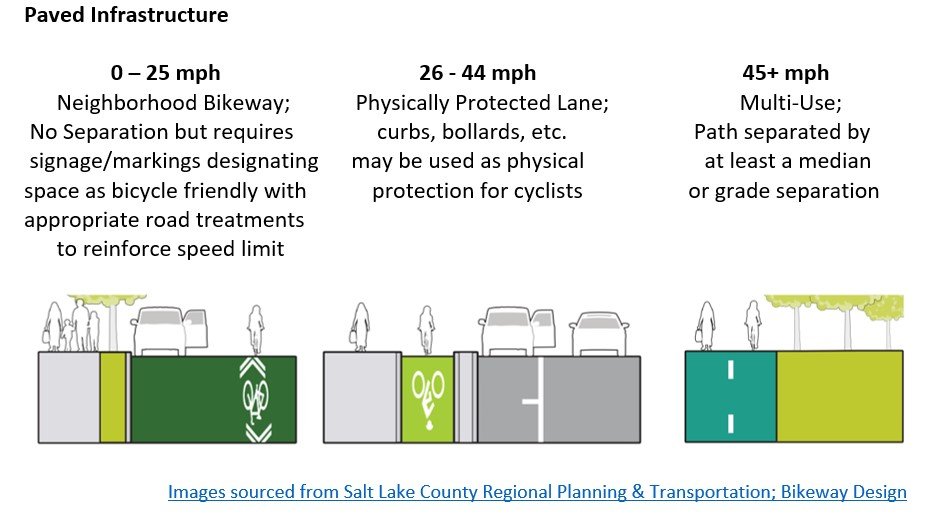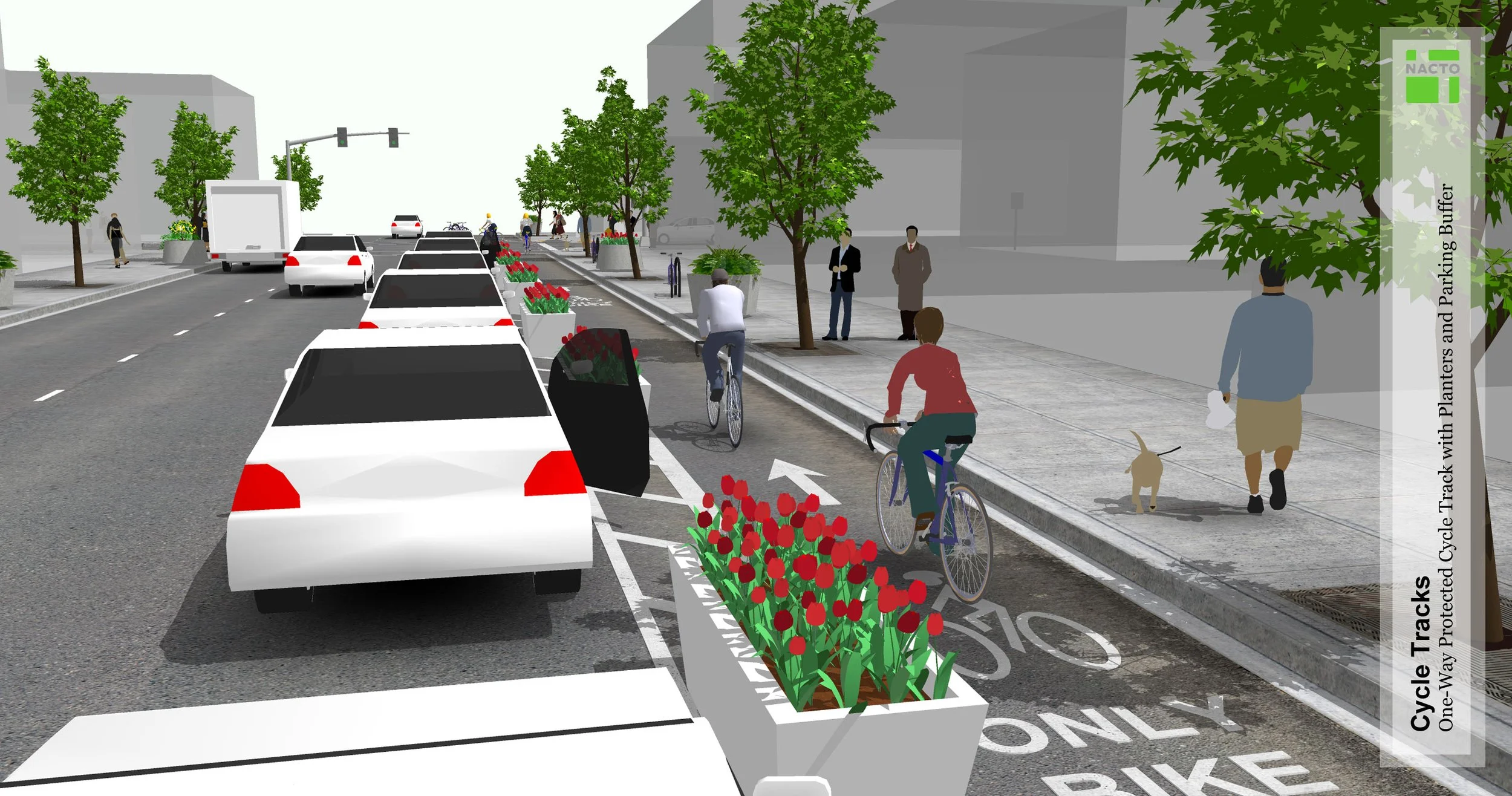Bike Lanes Meet Green Infrastructure
While we are moving towards safer bike infrastructure, why not make it green?
Better Bike Lanes There have been great strides made in creating safer and better bike infrastructure in Utah. To do this we are creating more lanes with physical separation between the cars and riders, rather than the standard painted white lanes on the road that are commonplace. As detailed below in the Bikeway Design image, best practices in bicycle friendly roadway design are centered around creating context sensitive facilities that increase in intensity as vehicle numbers and speeds increase. In urban environments, this often means creating barriers between car and cyclist that we can take advantage of to incorporate green infrastructure concepts.
What is green infrastructure?
It's a broad term that generally means building practices which incorporate ecosystem services. These are the cost effective and health-supportive services our ecosystems provide us with like clean air and water. In urban environments these natural ecosystem services can be lost. The cleaning and cycling of our water is impeded by the extensive amounts of concrete and other types of paved areas. In less built environments most of the ground surface is composed of permeable surfaces such as soil. When it rains the water is able to seep into this porous ground providing nearby plants with the water necessary to carry out their basic functions, or eventually returns back to groundwater supplies. During this process the plants, soil and rocks naturally cleans the water. Some of the water used by plants is then released back into the air through evapotranspiration, cooling the ground level temperature.
When these natural processes aren’t able to happen due to the widespread use of impermeable surfaces in these built environments, the water runs off into storm drains, streams, or rivers. As it flows over the concrete pollutants are picked up from the ground including fertilizers used in lawns, toxins from the road, and salts used during the winter. When this water drains into rivers and streams this increase of input impedes the natural hydrology of the stream creating a system which is referred to as ‘flashy’, this erodes the sides of the banks, eventually incising the stream. This pollutes the water, erodes away important riparian zones, and ultimately reduces the biotic richness. This process is called urban stream syndrome and has become a huge issue associated with rivers and streams within urban environments.
“...landscapes with parking lots, roads, and rooftops, dramatically change this water balance. Much less precipitation is absorbed into the soil, and much more flows across the land, gathering oils, pesticides, animal waste, and trash along the way.” - ( EPA, Green Infrastructure in Arid and Semi-arid Climates )
How does this all come together?
Not only does storm water degrade our rivers, but the treatment of stormwater collected from storm drains is a costly operation, which could be done for free by the natural processes if we were to break up some of this concrete island we have built. Protected bike lanes give us a great way to do this in the barriers that shield the biker from the cars as well as helping with traffic speed and volume management. By utilizing bioswales, trees, small strips of mulch, rocks, rain gardens and drought resistant plants as the barrier we can create more areas of porous ground where rain can infiltrate.. Other benefits of this include combating heat islands, air purification, increased habitat connectivity, supporting pollinators, and creating a more aesthetically pleasing environment for pedestrians. These more ‘attractive’ and safer lanes will encourage their use and subsequently bring Utah into a greener, safer, and smarter future.
“Bicycle boulevards present an opportunity to integrate stormwater treatment facilities, street trees, and public gathering spaces with traffic speed and volume management treatments. By incorporating greenstreet elements roadway runoff is slowly attenuated onsite, water quality is improved, paving is reduced, and habitat connectivity is improved.” -( NACTO, Urban BikeWay Design Guide )
There are many great pros to building, and incorporating bike infrastructure into our cities such as; decongesting busy streets, creating a healthier and happier society, and reducing carbon emissions released during transportation. An easy way we can add to this laundry list of positive impacts is to help green our cities by breaking apart some of this concrete jungle we have built. Not only does this take a step to restore our hydrological cycle, but it creates a city which encourages us to choose other modes of transportation, that don't just prioritize the car… So why not build green?





